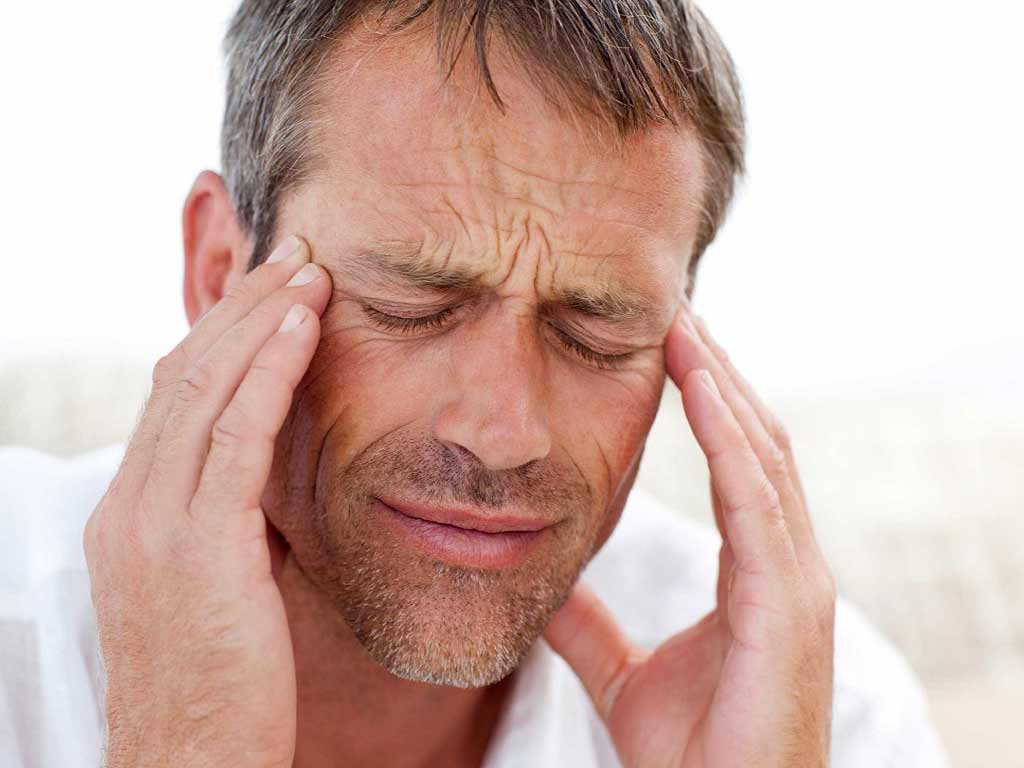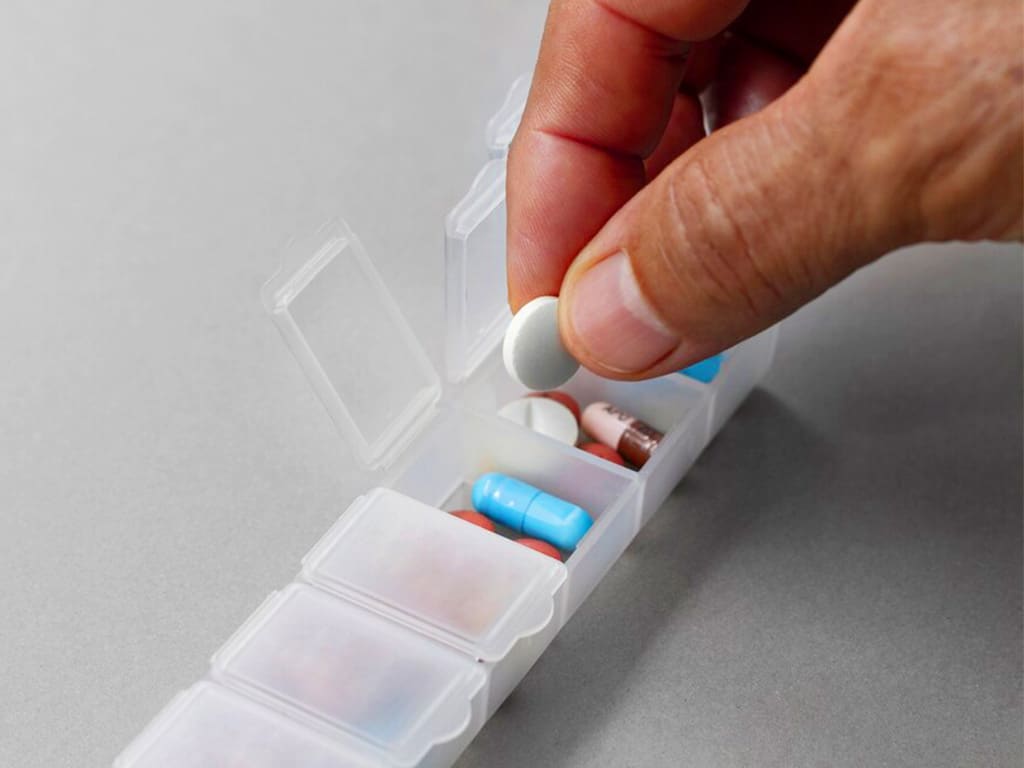
Tension headaches are one of the most common types of headaches. They are described as a constant, dull ache that can cause discomfort and interfere with daily activities. While they are not typically severe, they can still be bothersome for many people. Fortunately, there are several ways to get tension headache relief. The common treatment options include rest and relaxation techniques, electrical stimulation, pain medications, and massage therapy. Drinking caffeine and other alternative therapies can also help.
The exact cause of tension headaches is unknown, but there are several factors that can trigger it. Physical or emotional stress, eye strain, and wrong sleeping position can lead to headaches. In addition, the symptoms may include pain or pressure on the top, front, or sides of the head. There is also mild sensitivity to light and sound. This article will present the top strategies to help alleviate tension headaches and improve overall well-being.
Jump to a Section:
- How to Achieve Tension Headache Relief with TENS
- How to Achieve Tension Headache Relief with Good Sleep and Rest
- How to Achieve Tension Headache Relief with Caffeine
- How to Achieve Tension Headache Relief with Regular Exercises
- How to Achieve Tension Headache Relief with Breathing
- How to Achieve Tension Headache Relief with Hot or Cold Therapy
- How to Achieve Tension Headache Relief with Posture Correction
- How to Achieve Tension Headache Relief with Massage Therapy
- How to Achieve Tension Headache Relief with Acupuncture
- How to Achieve Tension Headache Relief with Pain Medication
How to Achieve Tension Headache Relief with TENS
TENS (Transcutaneous Electrical Nerve Stimulation) is a drug-free method of tension headache relief. The non-invasive therapy works by sending mild electrical impulses through the skin to stimulate the nerves and block pain signals. The pulses also induce the production and release of endorphins. These natural chemicals have analgesic effects, helping to reduce pain sensations.
The therapy uses a portable device called a TENS machine with a pulse generator and adhesive electrode pads. To use the device, place the electrodes near the pain area and adjust the settings to a comfortable level. In the case of tension headaches, place the TENS pads on the muscle close to the neck and on the shoulder. Generally, avoid using the device on the temples or head, especially without professional guidance.
The TENS device has adjustable pulse rates (frequency), pulse duration, and amplitude (intensity) to control the stimulation. This flexibility allows users personalised treatment based on their comfort level and pain intensity. The therapy can be used for 20-30 minutes, up to several times a day, depending on the severity of the headache.
Benefits of Pain Treatment Using TENS
- Non-invasive: TENS does not involve needles or incisions that can be uncomfortable or intrusive.
- Drug-free: It does not involve the use of medications, avoiding the side effects associated with it. Additionally, it does not have the potential for overdose or dependence.
- Versatile pain management: The TENS machine has adjustable settings to cater to different types of pain conditions.
- Improve circulation: TENS increase blood flow, relaxing tense muscles that contribute to tension-type headaches.
- Portability: The device is compact and lightweight, making it convenient to carry and use anytime.
- Adjunct treatment: TENS therapy can be combined with other pain relief methods.

How to Achieve Tension Headache Relief with Good Sleep and Rest
Lack of sleep can trigger headaches and worsen existing ones. Thus, establishing good sleep practices can help provide tension headache relief. Good sleep and rest are also essential in helping the body and mind recover from the stress and strain that may be causing headaches. One key step is to get enough restorative sleep, which is seven to nine hours of sleep each night.
To alleviate headaches, maintain a regular sleep schedule. Individuals should go to bed and wake up at the same time every day, even on weekends. It can help regulate the internal clock, making it easier to fall asleep and stay asleep throughout the night. Additionally, create a relaxing bedtime routine. Engage in calming activities before bed to signal the body that it is time to sleep.
A comfortable sleep environment is also helpful in maintaining proper sleep and rest habits. Make sure the room is dark, quiet, and cool. If a person cannot fall asleep after 15 minutes, do something quiet and light until they feel drowsy. Avoid using electronic devices or taking headache medicines that contain caffeine before bed.
Adjusting the Way You Sleep
Sleeping habits can impact the body and the occurrence of tension headaches. Hence, making adjustments can help improve sleep. Firstly, use a supportive pillow. Choose a pillow that provides adequate support for the head and neck. Secondly, sleep in a comfortable position. Avoid sleeping on your stomach, as it can strain your neck and spine.
Thirdly, keep the spine aligned in a neutral position. This helps to prevent strain on the muscles and nerves that can lead to tension headaches. Lastly, side sleeping can reduce snoring and heartburn. Insert a firm pillow between your knees to reduce stress on the hips and lower back.

How to Achieve Tension Headache Relief with Caffeine
Caffeine is one of the simple solutions to achieve tension headache relief. It can be found in coffee, tea, and chocolate. Caffeine works by constricting blood vessels in the brain, which can reduce the intensity of headaches. However, it is important to avoid consuming excessive amounts, as it can worsen symptoms in the long run.
One way to use caffeine for headache relief is by drinking a cup of coffee or tea when there is an oncoming pain. Limit intake to 100-150 milligrams per day, which is equivalent to one cup of coffee. Moreover, drink in moderation and avoid caffeine consumption close to bedtime, as it can interfere with sleep. It is vital to stay hydrated when drinking coffee or tea, as dehydration can actually trigger headaches.
Furthermore, note that caffeine withdrawal can also trigger headaches in some individuals. Gradually reduce intake rather than abruptly stopping when experiencing headaches. Overall, it is essential to follow the recommended dosage guidelines to avoid side effects or complications.
How Does Caffeine Help?
Caffeine is a natural stimulant that can alleviate severe headaches in several ways. It works by blocking adenosine, a neurotransmitter that promotes relaxation. Caffeine also constricts blood vessels, reducing the throbbing sensations of headaches. Additionally, it has mild pain-relieving properties that can decrease the intensity of symptoms.
Caffeine intake can also increase alertness and improve focus. It can be beneficial when trying to function through a headache or migraine. Nevertheless, it is important not to rely solely on caffeine for headache relief. Incorporating other lifestyle changes can help manage tension headaches more effectively. Consume caffeine in moderation and stay hydrated.

How to Achieve Tension Headache Relief with Regular Exercises
Regular exercise offers numerous benefits for the body and mind. One such benefit is providing natural tension headache relief. Incorporating regular exercise can help alleviate symptoms. It can also minimise the frequency of chronic tension headaches. Furthermore, physical activity can reduce stress, improve circulation, and release endorphins. Including exercises that focus on stretching, strengthening, and posture can prevent muscle tension and relieve existing pain.
Some effective exercises include neck stretches, shoulder rolls, and gentle yoga poses. Begin with low-impact exercises such as walking, yoga, or swimming. Then, gradually increase the intensity as tolerated. In addition to neck and shoulder exercises, cardiovascular workouts or activities can also help reduce stress, reduce tension, and promote relaxation.
It is vital to listen to the body and not push too hard, especially if experiencing a headache. Consistency is key when it comes to exercise for effective relief. Nevertheless, consulting with a healthcare provider or physical therapist is essential before starting any new exercise routine. They can provide guidance on the type of exercises that are suitable for individual conditions and medical history.
Exercises to Try Out
- Neck stretches: Turn your head back and hold for two to three seconds, and repeat for five times or more. Additionally, try touching your ear to your shoulder and hold for five seconds, then switching sides.
- Shoulder blade stretches: Pinch your shoulder muscles together and tuck them down as if you are trying to tuck them into your back pockets. Hold for a count of three, then release.
- Side neck pull: Reach your right hand around your head and place it on the left side of your head. Gently pull your head down toward your right shoulder. Hold for three deep breaths, then switch sides.

How to Achieve Tension Headache Relief with Breathing
Breathing exercises are a simple yet effective way to achieve tension headache relief. Deep breathing techniques can help relax the body, reduce stress, and promote a sense of calm. It activates the parasympathetic nervous system, which slows heart rate and lowers blood pressure. It also increases the amount of oxygen reaching the brain, which helps reduce pain.
To begin, find a quiet and comfortable place to sit or lie down. Close your eyes and take a deep breath through your nose, filling your lungs with air. Hold your breath for a few seconds, and then slowly exhale through your mouth. Release any tension and stress with each exhalation. Repeat this process several times, focusing on each breath.
Another technique that can help with stress and migraine headaches is visualisation. Imagine being in a peaceful and calming place, such as a beach or forest. Picture yourself breathing in fresh air and exhaling any tension or pain. Visualise each breath, bringing relaxation and relief to your body. Practice this visualisation technique regularly to improve its effectiveness in managing episodic tension headaches.
Breathing Exercises
One of the useful exercises is diaphragmatic breathing. It involves sitting or lying down in a comfortable position. Then, place one hand on your chest and the other on your abdomen. Inhale deeply through your nose and exhale slowly through your mouth.
Another type is the progressive muscle relaxation. Start by tensing and then relaxing each muscle group, starting from your toes and working your way up to your head. The last example is the modified lion’s breath. Breathe in through your nose to fill the belly with air. Next, open your mouth widely and exhale with a “HA” sound.

How to Achieve Tension Headache Relief with Hot or Cold Therapy
To achieve tension headache relief with hot or cold therapy, understanding the benefits of each method is vital. Applying heat can help alleviate muscle tightness and improve blood circulation. Moreover, heat reduces joint stiffness and muscle spasms in the neck. It can be done through a heating pad, warm compress, or hot shower.
On the other hand, cold therapy can reduce inflammation and numb pain. It is suitable if the head pain is caused by muscle tension and swelling. To use hot or cold therapy for tension headache relief, start by placing the hot or cold pack on the back of your neck, shoulders, or forehead for about 10-15 minutes. Take breaks in between if needed.
It is essential to adjust the temperature accordingly when using hot or cold therapy for chronic tension-type headaches. Avoid extreme temperatures that may cause burns or discomfort. If the heat or cold is too intense, take a break before trying again. It is also recommended to apply heat in a safe and controlled manner.
Applying Hot or Cold Compress
Applying a hot or cold compress is a simple yet effective way to achieve tension headache relief. For a hot compress, use a heated gel pack or warm towel. Apply them on the back of the neck or shoulders for 15-20 minutes at a time. Avoid prolonged use, and make sure the temperature is comfortable.
Individuals may follow with a cold compress for 10-15 minutes after a few hours. Use an ice pack or a bag of frozen vegetables in the same area. It is important to wrap the ice packs with a towel or cloth to prevent direct contact with the skin.

How to Achieve Tension Headache Relief with Posture Correction
People can achieve tension headache relief with posture correction. Poor posture can contribute to muscle strain in the neck and shoulders, leading to head pain. One way to improve posture is to be mindful of the sitting and standing positions throughout the day. In addition, regularly check and adjust the posture while working or doing normal activities to prevent regular headaches or migraine attacks from occurring.
To correct the posture, keep the feet flat on the floor and the knees at a right angle when sitting. Make sure to keep the back straight, the shoulders relaxed, and the chin parallel to the ground. Furthermore, incorporating regular exercises or stretching can help release tension in the muscles. Certain routines focus on spine alignment, improving the poise or stance.
Adjusting the environment can help ease posture correction. For instance, keep the computer screen at eye level and use a chair with proper lumbar support when working. Additionally, keep the keyboard and mouse at a comfortable height. Finally, taking frequent breaks to stretch and move can help alleviate and prevent chronic headaches.
Other Benefits of a Good Posture
- Improved breathing and lung function.
- Reduced risk of developing back, neck, and shoulder pain.
- Increased energy levels and decreased fatigue.
- Improved digestion and reduced risk of gastrointestinal issues. It creates space for the digestive system to function properly.
- Increased confidence and improved body image.
- Enhanced circulation and reduced risk of varicose veins.
- Improve balance and coordination.
- Reduced risk of chronic headaches and migraines.
- Increased productivity and focus.
- Reduced risk of musculoskeletal injuries and improved athletic performance.
- Reduced stress and prevent abnormal positioning of the spine.
- Encourages proper alignment of the bones and joints, which reduces abnormal wear and tear on joint surfaces.

How to Achieve Tension Headache Relief with Massage Therapy
Massage therapy is another effective way to achieve tension headache relief. It is an integrative pain management method that involves kneading, rubbing, tapping, and stroking of the muscles and connective tissues. Likewise, applying gentle pressure can help release built-up tension that may be contributing to headaches.
Communicating with the massage therapist about the location and severity of the pain can help tailor massage techniques. Moreover, it improves circulation and reduces stress levels. It also stimulates certain trigger points that target specific areas of tension in the body. Furthermore, individuals can perform self-massage techniques to alleviate the symptoms at home. Some may also add essential oils to enhance the relaxation effects.
Some of the techniques that can help are cheekbone massage, scalp massage, and neck massage. A cheekbone massage uses firm pressure and small circular motions on the cheeks and ears. On the other hand, a scalp massage involves light to medium pressure on the head for five minutes. Lastly, a neck massage involves gentle strokes to relieve tight muscles in the area.
Reducing Stress
Stress is a crucial contributing factor to many ailments. It can lead to muscle stiffness, which can trigger headaches. Massage is one way to reduce stress and relieve pain. It can be a part of a comprehensive treatment plan to manage chronic conditions like migraines or cluster headaches.
Combining massage with other relaxation techniques can enhance the benefits of stress reduction. Additionally, regular massage therapy sessions can help prevent and manage chronic pain in the long term. Individuals may use several techniques like self-massage, deep breathing, and visualisation when they feel an oncoming headache episode.

How to Achieve Tension Headache Relief with Acupuncture
Acupuncture has been used for centuries as a natural remedy for pain, including tension headaches. The process involves inserting thin needles into specific points on the body to stimulate energy flow, release endorphins, and promote healing. It has been shown to provide tension headache relief and other conditions like chronic back pain, tendonitis, sciatica, and arthritis.
During an acupuncture session, a trained professional will identify the points on the body that correspond to specific symptoms. For tension headaches, it may include specific points on the side of the spine, upper neck to shoulder area, and the web between the thumb and index finger. However, individuals may experience minimal discomfort because of the needles.
Healthcare providers may advise regular acupuncture sessions to experience effective long-term pain relief. Many people also find that acupuncture can reduce the frequency of tension-type headaches. Furthermore, it can be used as a standalone treatment or with other modalities like massage therapy or medication for a more comprehensive approach to pain management.
Is Acupuncture Safe?
Acupuncture is generally a safe treatment method. However, it can carry some risks, such as bruising, fatigue and soreness. The practice requires a trained and licensed practitioner to ensure its safety. However, it may not be suitable for everyone, including pregnant women and those with bleeding disorders.
It is important to do thorough research and choose a qualified acupuncturist when seeking this treatment. Using sterile needles and following proper hygiene protocols can help reduce the risk of infection. Moreover, individuals should also communicate any concerns or medical conditions to their acupuncturist or healthcare provider before starting treatment.

How to Achieve Tension Headache Relief with Pain Medication
Taking pain medications is one of the most common methods to achieve tension headache relief. Over-the-counter options like ibuprofen, acetaminophen, or aspirin can help alleviate pain and discomfort. Nonsteroidal anti-inflammatory drugs (NSAIDs) work by inhibiting the production of prostaglandins, which are chemicals in the body that cause inflammation and pain. It is suitable for headache types with local inflammation.
Acetaminophen works by blocking pain signals in the brain. It is suitable for mild to moderate tension headaches. When taking headache medicine, it is essential to follow the dosage instructions on the packaging. Exceeding the recommended amount can lead to adverse effects like stomach ulcers, liver damage, or kidney problems. It can also cause rebound headaches.
Individuals should also be cautious if they have underlying health conditions like hypertension or are taking other medications that may interact with pain relievers. Consulting a healthcare provider before starting a new medication regimen is advised. Also, seek medical attention if the headache persists or worsens despite taking medications or other forms of pain relief.
Medicines to Take
- NSAIDs: These include ibuprofen, naproxen, and aspirin. They are available in pharmacies without a prescription. However, people younger than 19 years old should avoid taking aspirin to minimise the possibility of Reye’s syndrome.
- Acetaminophen or paracetamol: A pain reliever for headaches, fever, and mild to moderate body pains.
- Triptans: A prescription drug that specifically targets migraine headaches by constricting blood vessels and blocking pain pathways in the brain.
- Combination medications: Some over-the-counter options combine pain relievers with caffeine to enhance their effectiveness in treating tension headaches.
- Preventative medications: These include beta blockers or antidepressants to minimise headache frequencies.
Conclusion
Tension headaches are common types of pain conditions. However, they can be debilitating and affect normal activity levels and overall well-being. The symptoms include dull aches, pressure, and tightness around the head. To achieve tension headache relief, individuals can use several strategies. A sought-after method is TENS therapy. It is a drug-free and non-invasive treatment involving the delivery of mild electrical pulses to the body. Additionally, rest, proper sleep, good posture, breathing and regular exercises can also alleviate pain symptoms.
In some cases, heat and cold therapy, therapeutic massages, acupuncture, and pain medications can provide effective relief and help prevent regular headaches. Nevertheless, it is vital to consult with a health professional before starting any treatment regime to determine the best course of action. Likewise, seek medical attention if the symptoms do not improve or worsen over time. By incorporating a combination of these strategies, individuals can find effective methods to manage tension headaches.





















